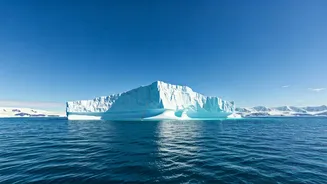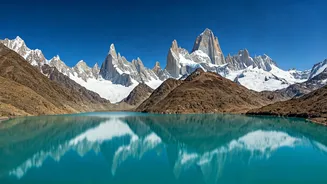A Daring Proposal
The Iceberg Project was a bold concept introduced by the United Arab Emirates (UAE), envisioning the towing of an enormous iceberg from Antarctica to the coast
of Fujairah. The primary goal was to address the UAE's scarcity of freshwater resources, turning the iceberg into a source of potable water. The project aimed to cut down on reliance on the desalination of seawater, which is energy-intensive and costly. The project was initially proposed to supply up to 30% of Fujairah's water needs, significantly easing the pressure on existing infrastructure and promoting environmental sustainability. The project also carried the allure of promoting tourism and creating a unique attraction.
The Mechanics of Towing
Towing an iceberg across vast ocean stretches is no simple task. The project involved a comprehensive logistical plan for carefully selecting a suitable iceberg, which would need to be large enough to endure the journey but not so massive as to be unwieldy. The icebergs were to be carefully chosen for their size, shape, and stability, with attention to their composition to ensure minimal melting during transit. This selection was critical for the feasibility of the project. Specialized tugboats and advanced navigation systems would be essential to steer the iceberg. The journey was estimated to take a significant amount of time, with careful navigation to avoid hazards and minimize melting. The project planners were also conscious of the need to protect the integrity of the iceberg, using various techniques to slow down melting, such as special insulation and surface treatments.
Environmental Considerations
Environmental impact played a crucial role in project development. The project was conceived with several key environmental concerns in mind. There were considerations regarding the potential effects on marine ecosystems along the route of the towing operation. The movement of the iceberg through the ocean could disrupt marine life. The UAE government aimed to minimize disruption by careful route planning and avoiding sensitive areas. The potential effects on the local climate were also assessed. Scientists investigated whether the introduction of a large mass of ice could impact local temperatures and weather patterns. Furthermore, the environmental sustainability of the project was central to its rationale. The project hoped to lessen reliance on energy-intensive desalination and instead create an eco-friendly source of fresh water.
Economic and Social Benefits
The Iceberg Project was also projected to have considerable economic and social benefits for the UAE. The availability of fresh water was expected to contribute to economic growth, supporting various sectors, including agriculture, tourism, and industry. The project also aimed to reduce dependency on imported water. The project was also expected to enhance tourism. The arrival of a massive iceberg was expected to create a unique tourist attraction. It had the potential to boost local businesses and provide jobs, creating a significant impact on the economy. Education and research opportunities would arise, generating jobs and opportunities for the local populace. The Iceberg Project was intended to contribute positively to the overall social development of the region.
What Happened?
Despite its ambitious goals, the UAE Iceberg Project did not proceed as originally planned. Several factors contributed to this outcome. The logistics of the project were incredibly complex and involved various technical challenges. Towing an iceberg over such distances required advanced technology and precise execution. The economic feasibility of the project was continuously scrutinized. The costs involved in towing the iceberg and maintaining its integrity were high. There were also questions about the financial viability of the project relative to other available water sources. While there were no official announcements of the project's cancellation, its implementation was put on hold indefinitely. The project served as an innovative concept and offered insights into the potential for creative solutions to address water scarcity and the importance of sustainability.















